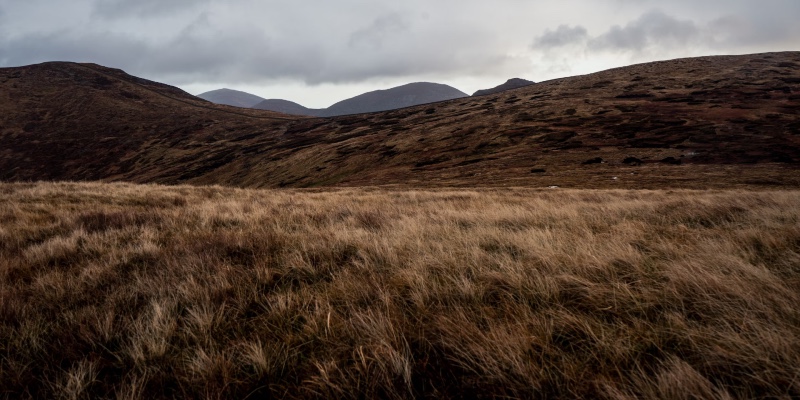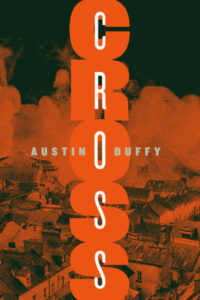The Independent Commission for the Location of Victims’ Remains, it was just announced, have called off the search for Robert Nairac’s body. Captain Nairac was a 29-year-old Grenadier Guards officer who was working undercover, more or less off his own initiative, in Northern Ireland during The Troubles. On the 14th of May 1977 he went to the Three Steps Inn on the slopes of Slieve Gullion and was never seen again. Nairac had gone to the Three Steps seemingly to meet a source and while there, according to various accounts, got up and sang a song. A few of the locals became suspicious that he was a British officer and accosted him in the carpark before taking him south of the Irish border over the Flurry Bridge where he was beaten and shot dead. What happened to his body afterwards has long been a cause of much speculation where I grew up, in Dundalk, not far from the slopes of Slieve Gullion, the broody mountain that guards the border between north and south and from where on a clear day you can peer down into the Irish Republic as far as Wicklow. In recent months, in an effort to find Nairac, a field in Faughart was dug up – not far from where Edward, Robert The Bruce’s brother, is buried – but the information must have been off and they turned up emptyhanded. In a statement, The Commission said it was “bitterly disappointing” not to have found him.
So Nairac himself is now part of the rich and brutal mythology of the area stretching back to the banner tales of Irish legend, many of which took root and form on the slopes of Slieve Gullion. Queen Meabh and the Brown Bull of Cooley, Cuchulainn and The Red Branch Knights. Even the grandaddy of them all, Finn McCool, a sort of Paddy Ulysses, encountered trouble on the shores of the miniscule lake situated on the peak of Slieve Gullion after encountering a beguiling maiden who, you’ve guessed it, turned out to be a witch. In recent years, and in particular during The Troubles, the myth has morphed a bit, centring on the economics of border exploitation and the social status and bloodlust of terrorism. Bandit Country is what Melvyn Rees, Secretary of State for Northern Ireland dubbed the area in 1975, not inaccurately despite the heat he got for it. He was referring to the nexus of South Armagh-North Louth which straddles the border, taking advantage of the different currencies and police jurisdictions on either side of it. During The Troubles the British soliders assigned to the area stayed holed up in their watchtowers, coming in and out via helicopter, wary of going on patrol for fear of assassination by sniper or boobytrap. One fifth of all their casualties during The Troubles took place in this small area with its surrounding farmland and windy back country roads beloved by the sheep and petrol smugglers, the population centres of Crossmaglen and Dundalk – on the northern and southern sides of the border respectively – and dotted by various smaller villages, Cullyhanna, Dromintee, Forkhill, Silverbridge. It is less often stated how stunningly beautiful this part of Ireland is. You certainly don’t find many American tourists there, who reliably gravitate on their Paddywagon tours west and south instead towards The Ring of Kerry or The Burren. But you could do worse than rent a car and go a mere hour north of Dublin airport to the Cooley Peninsula, Carlingford Lough and the breathtaking magistry of The Mourne Mountains. Come a bit inwards and you’ll encounter the more broody presence of Slieve Gullion herself, often shrouded in mist and perched on the ancient border of Ulster, guarding the Gap of the North, a bulwark against enemy invasion, a hiding place and a warning. Gullion and its granite ring, both geographically and in its very soul – expressed through her mythology – forms the centre of the nexus, what has always given the British so much gip and trouble. How one Prime Minister after another had cause to regret not siphoning off South Armagh and giving it up during partition of the country in 1921. How much bother they would have saved themselves. When The Troubles broke out the area became a sort of republican Iron Triangle, a depthless fount of hardline sentiment, not to mention the theatre for much murder and violence. Even within the IRA the republicans of South Armagh were a level above, as tightknit and supposedly resistant to informers as they come, a law onto themselves. As a character in my novel says, You can trust the boys from Cross to get things done. The book is based there, and has – I hope – its brand of humor but also its violence, the whiff of which was often in the air.
And so another mythology gets tacked on to the older ones. Setanta being locked out of Cullan’s castle and having to kill his vicious guardhound with only his hurley and sliotar as a weapon, becoming in his place the legendary Cuchulainn (literally the hound of Cullan) who, with his group of Red Branch Knights, guarded the Gap of the North from invasion by the forces of Queen Meabh, mad to recover her brown bull. Or Oliver Plunkett, accused of high treason because of the Popish Plot and hiding out on Gullion’s slopes from the British before being captured, hung, drawn and quartered, despite being known to be wholly innocent. (On your way up from the airport on the M1 you can pop into St Peter’s church in Drogheda to see the shrine where not just his head is kept but also his shoulder blade.) All glorious wonderful tales of brutality that have long since disappeared into benign enough abstraction.
Harder to accomplish though with the bias of recency because the not so funny thing about mythology is the closer you get to it the uglier it becomes. The abduction of Captain Nairac was bungled and amateurish, the men half-cut from drink. They were in any case mostly blowhards, sympathizers and hangers-on rather than steely operatives. And Nairac himself appears to have been deceived by his own sense of the romantic, more of a hearts-and-minds intelligence officer than a lethal instrument of the security state. The song he got up to sing in The Three Steps Inn was The Broad Black Brimmer, a sentimental old rebel tune. When they searched his quarters after he was discovered missing they found Irish language tapes. Seemingly the man was trying to learn it, presumably for the love of the culture because God knows who he might have spoken to in it. The details of the abduction are petty and tragic. When these great republican heroes had him outnumbered and bundled into their car some of them continued on to the Fairways Hotel where they simply carried on drinking. The others sent word to a full-time professional IRA man to get guidance on how to proceed. Needless to say this great hard man of The Cause had himself been drinking all day in a pub in Dundalk. The gun he stopped off en route to retrieve from a stone wall jammed three times before it finally worked on Nairac’s head. Their efforts at interrogating Nairac were bizarre. One of the men pretended to be a priest to get some sort of confession out of him. Nairac, dazed and battered, seems to have fallen for the ruse and I’m glad to hear it. Perhaps there was some comfort there for the man. His last words were bless me Father for I have sinned. Or at least, that’s what we’ve been told they were.
***


















